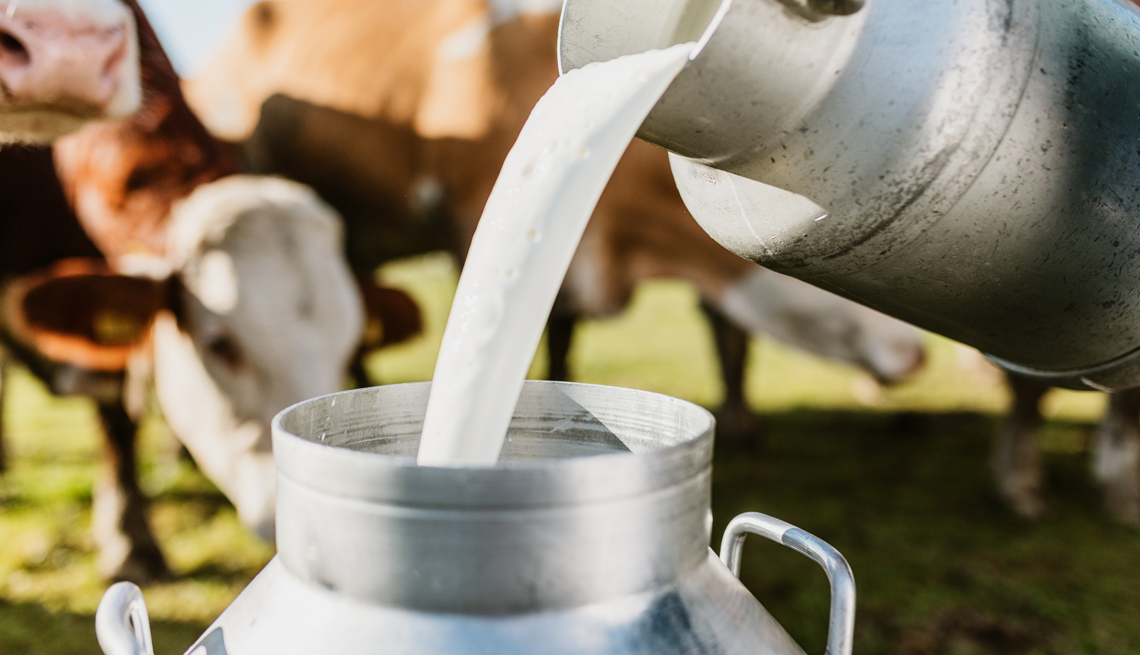AARP Hearing Center


For the first time, avian influenza, also known as bird flu, is affecting cattle in the U.S., prompting questions and concerns over the safety of our food supply.
Cases of bird flu have been confirmed in several dairy herds in Idaho, Kansas, Michigan, New Mexico, Ohio and Texas. Bird flu has also been diagnosed in one person who had been exposed to dairy cattle presumed to be infected.
Here’s what we know so far about bird flu’s effect on milk, cheese, eggs, poultry and more.
Is it safe to drink milk?
There’s little concern about the safety or availability of milk products in the U.S. For one, much of the milk from infected dairy cows is being “diverted or destroyed so that it does not enter the human food supply,” says the U.S. Food and Drug Administration (FDA). And as of now, the affected amount is too limited to have a real impact on supply and prices, experts say.
Another reason: Nearly all milk sold in the U.S. is pasteurized. This heat treatment process — which is required for any milk sold across state lines — is “very likely” to kill viruses, like bird flu, the federal officials say. “However the process is not expected to remove the presence of viral particles,” the FDA says, which explains why fragments of inactivated virus have been found in samples of pasteurized milk. Still, the agency says that the findings “do not represent actual virus that may be a risk to consumers” and that “to date, we have seen nothing that would change our assessment that the commercial milk supply is safe.”
Health officials have long urged people to avoid raw milk and are reminding consumers of this recommendation in light of the bird flu outbreak. Raw milk and raw milk products (like cheeses) are not pasteurized and can be contaminated with potentially harmful germs.
A slim share of the population (less than 1 percent) drinks raw milk, often for its purported health perks, though the Centers for Disease Control and Prevention (CDC) says there’s no scientific evidence that drinking raw milk provides additional nutritional benefits.
It’s unclear whether bird flu viruses can be transmitted through consumption of raw milk from infected cows, the FDA says. “However, we have long known that raw milk can harbor dangerous microorganisms (germs) that can pose serious health risks to consumers.”
It’s legal to sell raw milk in about half of U.S. states, according to the CDC. In these states, if the word “pasteurized” is not on a product’s label, the FDA cautions that it may contain raw milk. Farmers markets and farm stands should also be able to tell you if the products they are selling have been pasteurized.
Typically your packaged sliced and shredded cheeses are pasteurized — but not always, so be sure to check the label, depending on where you live, says Barbara Kowalcyk, a food safety expert and associate professor and director of the Food Policy Institute at George Washington University’s Milken Institute School of Public Health.































































More From AARP
Older Adults Still Feel Effects of COVID-19 Pandemic
The toll is still felt — overwhelmingly by older Americans
Are You Using Your Neti Pot Correctly?
Never practice nasal rinsing with tap water, experts say
6 Common Slow Cooker Mistakes That Could Make You Sick
Avoid foodborne illness with these tips
Recommended for You